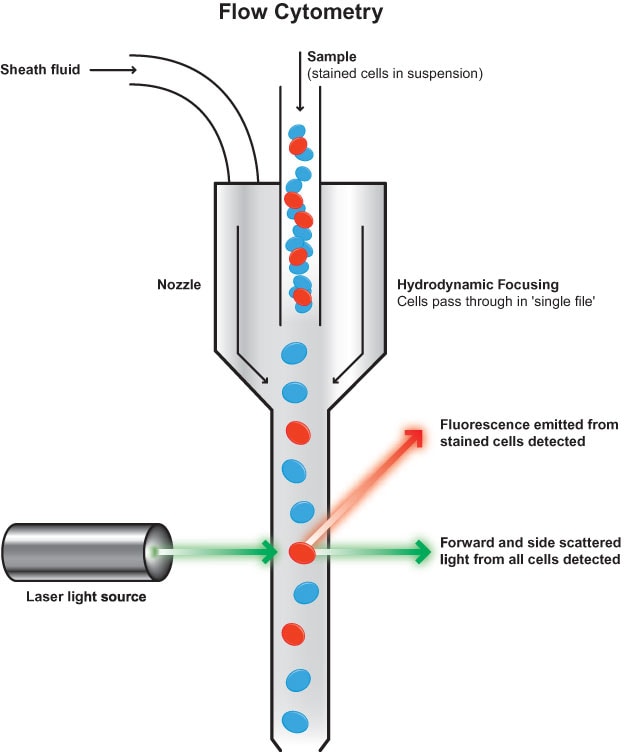Hematology analyzers are computerized, highly specialized machines that count the number of different types of red and white blood cells, blood platelets, haemoglobin, and haematocrit levels in a blood sample.
Principle of Operation
There are two chambers. Each uses flow cytometry, that a method which employed to cell count.

The light is picked up on a detector. When a cell passes by, the light flow is interrupted and it causes a "blip" in the detector. The size of the "blip" is proportional to the size of the cell.
In one chamber, the red cells are counted. The detecter is set to count only the cells that fall with in the size limits of Red Blood Cells.
In the other chamber, the blood is put into a solution that lyses the red blood cells leaving only WBC and platelets intact. The detector is set to count cells that fall in the platelet range and in the WBC range of sizes, nuclei size and shape is also detected here and is used to differentiate one type of WBC from another. It also quantifies hemoglobin here with spectrophotometry
Among the many remarkable advances in medical science in the last few decades, hematology analyzers have quietly revolutionized medical practice. Internal medicine, pediatrics and oncology are among the many specialties of medicine that require frequent, up-to-date and accurate CBC tests to determine if treatments are efficacious.
External Reference link;
http://www.ivdtechnology.com/article/challenges-developing-hematology-instruments
Principle of Operation
There are two chambers. Each uses flow cytometry, that a method which employed to cell count.

The light is picked up on a detector. When a cell passes by, the light flow is interrupted and it causes a "blip" in the detector. The size of the "blip" is proportional to the size of the cell.
In one chamber, the red cells are counted. The detecter is set to count only the cells that fall with in the size limits of Red Blood Cells.
In the other chamber, the blood is put into a solution that lyses the red blood cells leaving only WBC and platelets intact. The detector is set to count cells that fall in the platelet range and in the WBC range of sizes, nuclei size and shape is also detected here and is used to differentiate one type of WBC from another. It also quantifies hemoglobin here with spectrophotometry
 |
| Inside View. |
Among the many remarkable advances in medical science in the last few decades, hematology analyzers have quietly revolutionized medical practice. Internal medicine, pediatrics and oncology are among the many specialties of medicine that require frequent, up-to-date and accurate CBC tests to determine if treatments are efficacious.
External Reference link;
http://www.ivdtechnology.com/article/challenges-developing-hematology-instruments
No comments:
Post a Comment